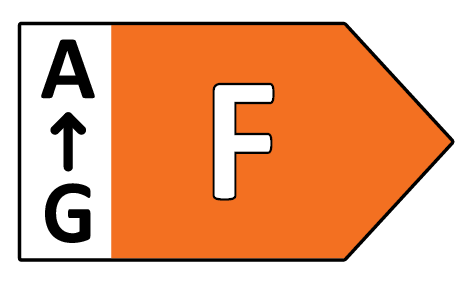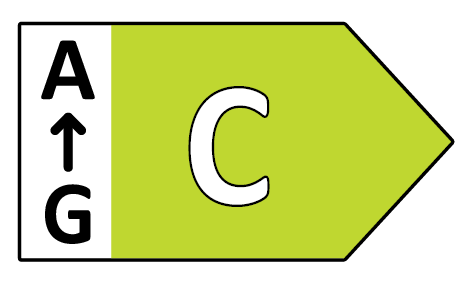
LED fluorescent tube
Energy saving lamps, consume less energy than conventional fluorescent tubes. Long life, durable, suitable for many applications. More expensive initially, but help reduce energy and maintenance costs in the long term.




























Fluorescent tubes
Fluorescent tubes are a common form of lighting and are used in many different areas. They consist of a glass tube, which is equipped with a gas-filled illuminant, and an electrical connection device. The application of electrical voltage causes the illuminant to glow.
Fluorescent tubes are energy-saving and offer a long service life. They are also available in various lengths and shapes, making them suitable for a wide range of applications. They are especially widely used in office and industrial environments, as well as in public buildings and homes.
When using fluorescent tubes, it should be noted that they must be switched off before replacement. In addition, it should be noted that fluorescent tubes should not be touched with bare hands, as they contain electrical voltage and can therefore cause electric shock. It is also important to use fluorescent tubes in the appropriate fixtures or fixture housings to ensure safe and efficient lighting.
What are the shapes and types of fluorescent tubes?
Fluorescent tubes come in a variety of shapes and types. The most common are the classic straight fluorescent tube, the U-shape and the spiral fluorescent tube. In addition, there are special fluorescent tubes with special properties such as high luminous intensity or a longer service life. The selection of the appropriate fluorescent tube depends on the requirements of the place of use, such as the size of the room, light output and color rendering. It is important to select the fluorescent tube according to the intended place of use to produce optimal light.
Fluorescent tube T5
The designation "T5" refers to the size of the fluorescent tube. T5 stands for "Tube 5" and describes the diameter class of the tube. T5 fluorescent tubes have a diameter of 16mm and are therefore smaller than other types such as T8 or T12. This compact size makes T5 fluorescent tubes ideal for use in tight or confined spaces, such as offices or kitchens. T5 fluorescent tubes are also characterized by high energy efficiency and long life. However, it is important to note that in certain applications they require a special ballast to function.
Fluorescent tube T8
The designation "T8" refers to the diameter of the fluorescent tube. T8 means that the tube has a diameter of 26 mm. This type of fluorescent tube is widely used in many fields because it provides high luminous efficiency and is energy efficient. Fluorescent tube T8 is particularly suitable for use in offices, schools, hospitals and similar facilities where uniform lighting is required. However, it should be noted that there are certain precautions when operating fluorescent tubes to protect the environment and health.
Fluorescent tube T12
In fluorescent tubes, the designation "T12" stands for the diameter of the tube. A T12 tube has a diameter of 12/8 inches or about 30 millimeters. The designation T5, T8 and T12 refer to the diameter of the fluorescent tube and are a widely used standard. T12 fluorescent tubes used to be more common, but have now been replaced in many applications by T8 and T5 fluorescent tubes, which are more efficient. It is important to note that T12 tubes cannot be used in the same fixtures as T8 or T5 tubes.
LED fluorescent tubes
LED fluorescent tubes are a modern alternative to traditional fluorescent tubes. They are more efficient and have a longer life than traditional fluorescent tubes. LED fluorescent tubes are available in a variety of lengths and sizes, making them suitable for a wide range of applications.
When using LED fluorescent tubes, it is important to choose the right size and base for the intended application. They also need to be installed carefully to ensure optimal performance. Another important factor when using LED fluorescent tubes is choosing the right light hue. There are several hues available, including warm white, neutral white, and cool white. Choosing the right hue depends on the application in which the LED fluorescent tube will be used.
Overall, LED fluorescent tubes offer a cost-effective and environmentally friendly alternative to traditional fluorescent tubes. They are durable, energy efficient, and can be used in a variety of applications.
Types of bases for fluorescent tubes
The base of a fluorescent tube refers to the part that connects the fluorescent tube to the lamp holder. There are a variety of different types of sockets, which differ in their dimensions and connection options.
Socket 2G13, 2GX13, FA6, G10Q, G13 and G5 are different types of sockets used for fluorescent tubes. The abbreviations represent the dimensions of the socket and denote the diameters and number of contacts required to connect it to the lamp holder.
It is important to pay attention to the correct base type when installing a fluorescent tube to ensure that the fluorescent tube connects properly and functions properly.
Mercury in Fluorescent Tubes
Mercury is a heavy metal found in small amounts in conventional fluorescent tubes. It is a dangerous toxin that can be harmful to health in high doses. Therefore, it is important to take precautions when handling damaged or replaced fluorescent tubes. However, in modern fluorescent tubes, the amount of mercury is significantly reduced, which improves their environmental impact. It is important to note that even with modern fluorescent tubes, disposal should be done carefully to avoid mercury release.
What should be considered when using fluorescent tubes?
There are some aspects to consider when using fluorescent tubes to ensure optimal performance and long life. Here are some important factors:
Base: It is important that the fluorescent tube has the correct base that is appropriate for the location and existing fixture.
Compatibility with existing ballast: It is important that the ballast is compatible with the fluorescent tube being used to ensure optimal performance.
Light Color: Light color can vary depending on the application. There are warm and cool light colors, which are suitable differently depending on the room and purpose.
Power: The power of the fluorescent tube should meet the requirements of the application site.
Service life: the service life of the fluorescent tube should be considered in the selection process to save cost and time for reinstallation.
It is important to consider these factors when selecting and using fluorescent tubes to ensure optimal performance and long life.
Climate neutrality for fluorescent tubes
Climate neutrality is an important factor to consider when choosing fluorescent tubes. A climate-neutral approach means that the emissions of greenhouse gases caused by the use of the fluorescent tube are offset by appropriate measures. Here, for example, a focus can be placed on energy-efficient fluorescent tubes that require less energy and therefore produce fewer greenhouse gases. The use of recyclable materials in the manufacture of fluorescent tubes can also help to increase climate neutrality. It is important to use resources consciously and responsibly in order to contribute to the protection of our environment.
 Deutsch
Deutsch
 English
English
 Nederlands
Nederlands
 Français
Français
 Contacts
Contacts
 +49(0)2822-9148740
+49(0)2822-9148740












 Andorra
Andorra
 Belgien
Belgien
 Bosnien und Herzegowina
Bosnien und Herzegowina
 Bulgarien
Bulgarien
 Dänemark
Dänemark
 Estland
Estland
 Finnland
Finnland
 Frankreich
Frankreich
 Griechenland
Griechenland
 Irland
Irland
 Island
Island
 Italien
Italien
 Kroatien
Kroatien
 Lettland
Lettland
 Liechtenstein
Liechtenstein
 Litauen
Litauen
 Luxemburg
Luxemburg
 Malta
Malta
 Monaco
Monaco
 Niederlande
Niederlande
 Norwegen
Norwegen
 Österreich
Österreich
 Polen
Polen
 Portugal
Portugal
 Rumänien
Rumänien
 San Marino
San Marino
 Schweden
Schweden
 Schweiz
Schweiz
 Serbien
Serbien
 Slowakei
Slowakei
 Slowenien
Slowenien
 Spanien
Spanien
 Tschechische Republik
Tschechische Republik
 Ungarn
Ungarn
 Vereinigtes Königreich
Vereinigtes Königreich
 Zypern
Zypern
.png)
.jpg)

.jpg)
.jpg)






.jpeg)

.jpeg)


.jpeg)

.jpg)

.jpg)
.jpg)
.jpg)